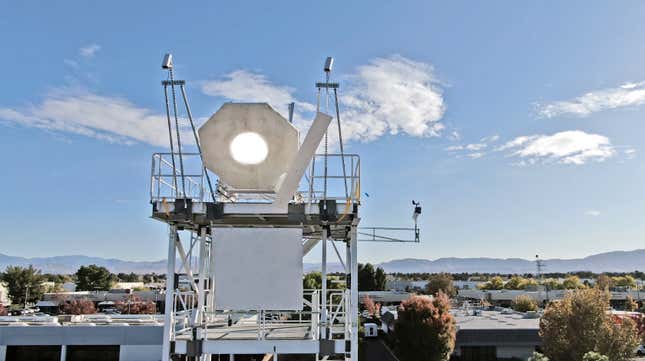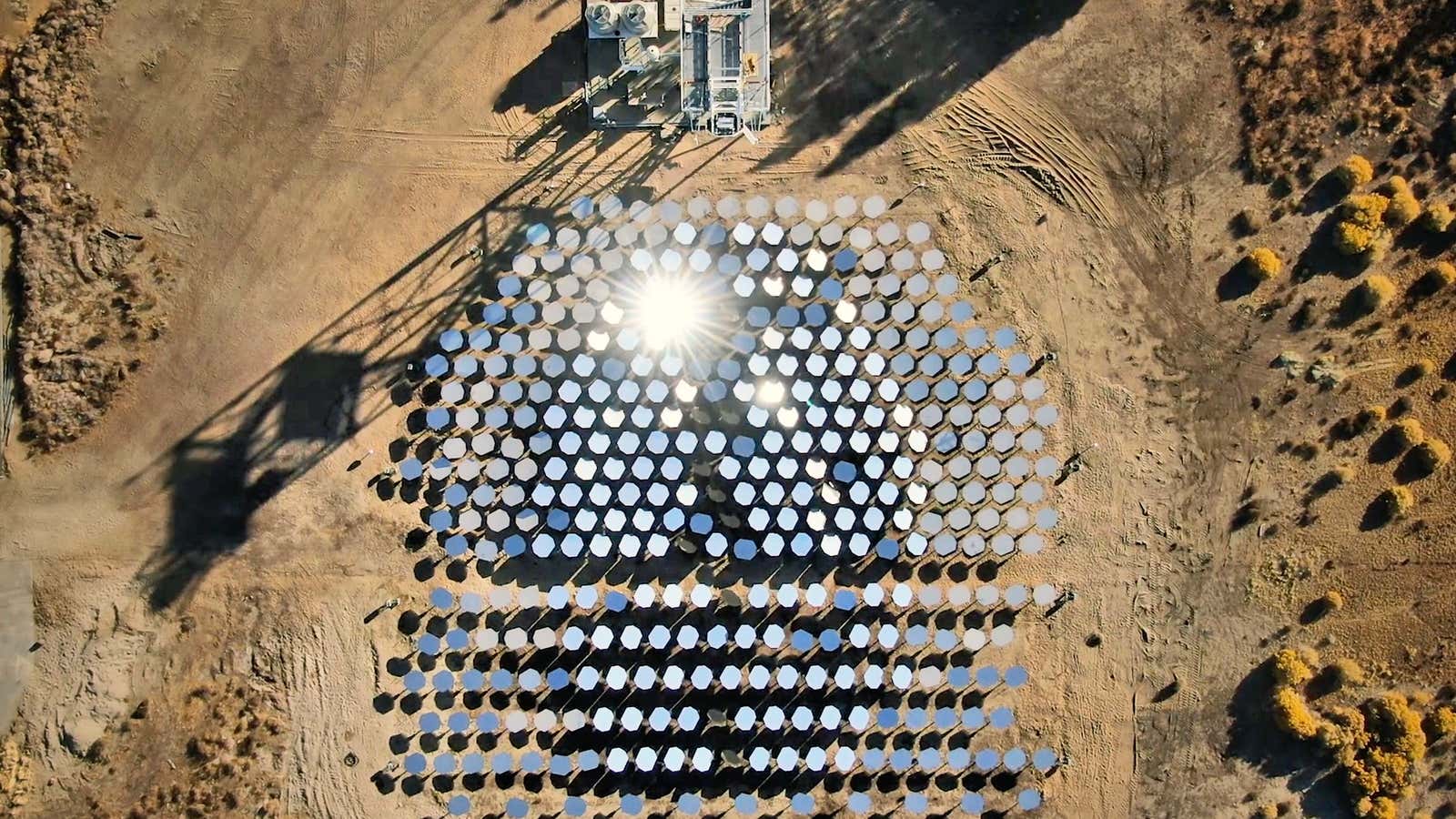The use of fossil fuels in the production of heat to make cement, steel, and other industrial products creates 10% of global carbon emissions. That’s five times the emissions put out by all planes.
A new solar startup, funded by billionaires Bill Gates and Patrick Soon-Shiong, believes it has an alternative. Heliogen has come out of stealth mode to showcase a technology that can focus the sun’s beams to achieve temperatures as high as 1,500°C—far beyond those reached by current technology. That’s high enough, in theory, to provide the heat needed to make cement, convert biomass into biofuels, and perhaps even extract hydrogen from water.
The brains behind the startup is Bill Gross, a California-based serial entrepreneur who has founded several solar startups in the past decade. He also incubated Energy Vault, a company that uses concrete blocks to store energy (it raised $110 million from SoftBank earlier this year). He believes Heliogen represents a “technological leap” in cutting emissions from the industrial sector, which haven’t received as much attention as the energy industry.

In focus
Concentrating solar energy to capture its heat is nothing new; the idea dates back as far as 1878. Today, the most recognized example of a so-called solar thermal plant is an array of mirrors, arranged to concentrate sunlight on a spot on a central tower containing a fluid like molten salt or water. Deployed at commercial scale, sunlight focused by the mirrors can heat the fluid to temperatures of up to 600°C, which is then used to turn a turbine and generate electricity. Countries like Spain invested heavily in the technology in the 2000s, and, as recently as 2010, it was cheaper to generate electricity using concentrated solar than photovoltaic (PV) panels.
Since then, however, the costs of manufacturing solar PV have fallen drastically, and solar thermal technology hasn’t improved enough to compete. A number of solar thermal companies have failed or are struggling to attract funding.
Gross’s previous attempt at improving solar thermal technology was a company called eSolar, founded in 2007. Earlier plants had used large mirrors that could warp under the immense heat of the sun; eSolar instead built small mirrors that could be made in bulk. Crucially, it also built software that tracked the sun’s movement and used it to better align the mirrors. But eSolar didn’t take off. It shut its US operations and Gross says the company was sold to a Chinese company in 2015. (Quartz asked the name of the company; Gross said he couldn’t remember.)
At around that time, Gross came up with the idea of what would become Heliogen. He presented his idea to Bill Gates in 2014 and secured the initial funding to test the technology. Software would still be at the heart of the company, but it would be used to solve a different and more significant problem with the technology.

Closing the loop
Until Heliogen came along, Gross says, the mirrors in a typical solar thermal plant relied on “open-loop system” that used the position of the sun and the position of the tower to decide where the mirrors should face. But the system was error-prone. There was no sensor on the tower that checked whether all the mirrors were actually targeting the same spot on the tower.
Gross re-hired about a third of eSolar’s team at Heliogen and got them to work on a “closed-loop system.” He installed four cameras around the area where the mirrors were focused on the tower. His team of engineers then used computer-vision software to build an algorithm that could detect the position of each mirror and the intensity of light it was reflecting. If the light was equally intense as measured by every camera, then the mirrors were perfectly aligned. If not, then the software would instruct to the mirrors to move until the intensities matched.
This sort of image analysis is computationally intense. Gross credits the lower cost of graphical processing units (GPUs) in recent years for making it feasible to develop and run Heliogen’s algorithms. The cost of steel and mirrors may not be coming down, but computing power is certainly getting cheaper.
With their alignment algorithm, Gross’s team was able to use 100 mirrors on a pilot thermal plant that produced 250 kW of thermal power. Crucially, Heliogen achieved a temperature of 1,500°C at the focal point on the central tower. Based on this success, Soon-Shiang and venture capital firm Neotribe invested more money in Heliogen in 2018.
At 1,000°C limestone can be converted to lime, a process crucial to making cement. At 1,500°C, catalysts like cerium oxide can extract hydrogen from water, which can be used as clean heating fuel or turned into carbon-neutral synthetic fuels. These are trillion-dollar industries with huge carbon footprints.
Reaching 1,500°C using solar thermal is no small achievement, says Jenny Chase, a solar analyst with Bloomberg New Energy Finance. But technological success doesn’t guarantee commercial success. Converting solar heat to electricity, as current plants do, allows them to move the energy large distances. Instead, Gross is focused on using the high-temperature heat for industrial applications, which will require the Heliogen units to be built close to the industrial plant or vice versa.
Gross won’t reveal the costs of building Heliogen plants. Actual commercial contracts will be the real test of the technology.
